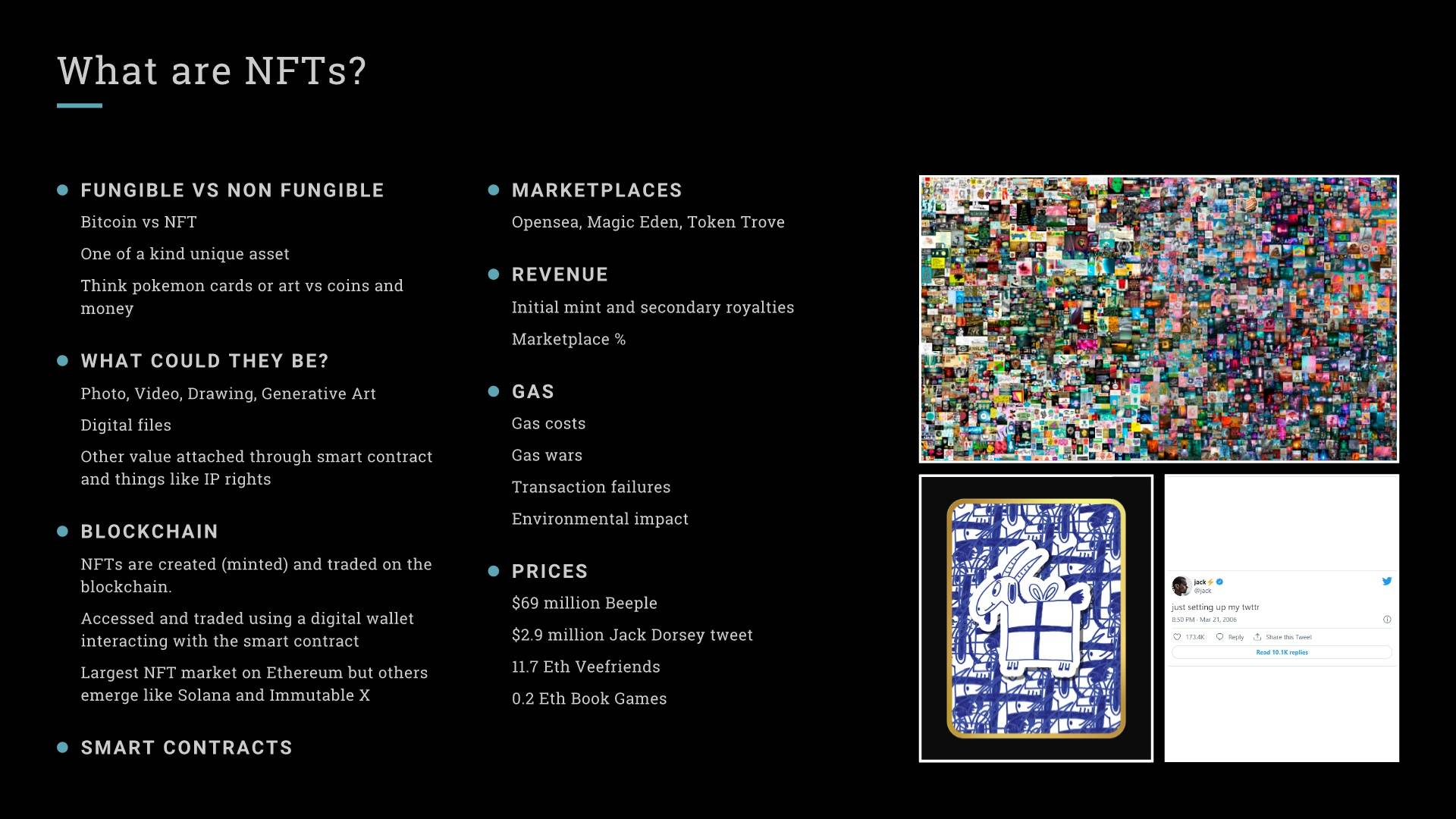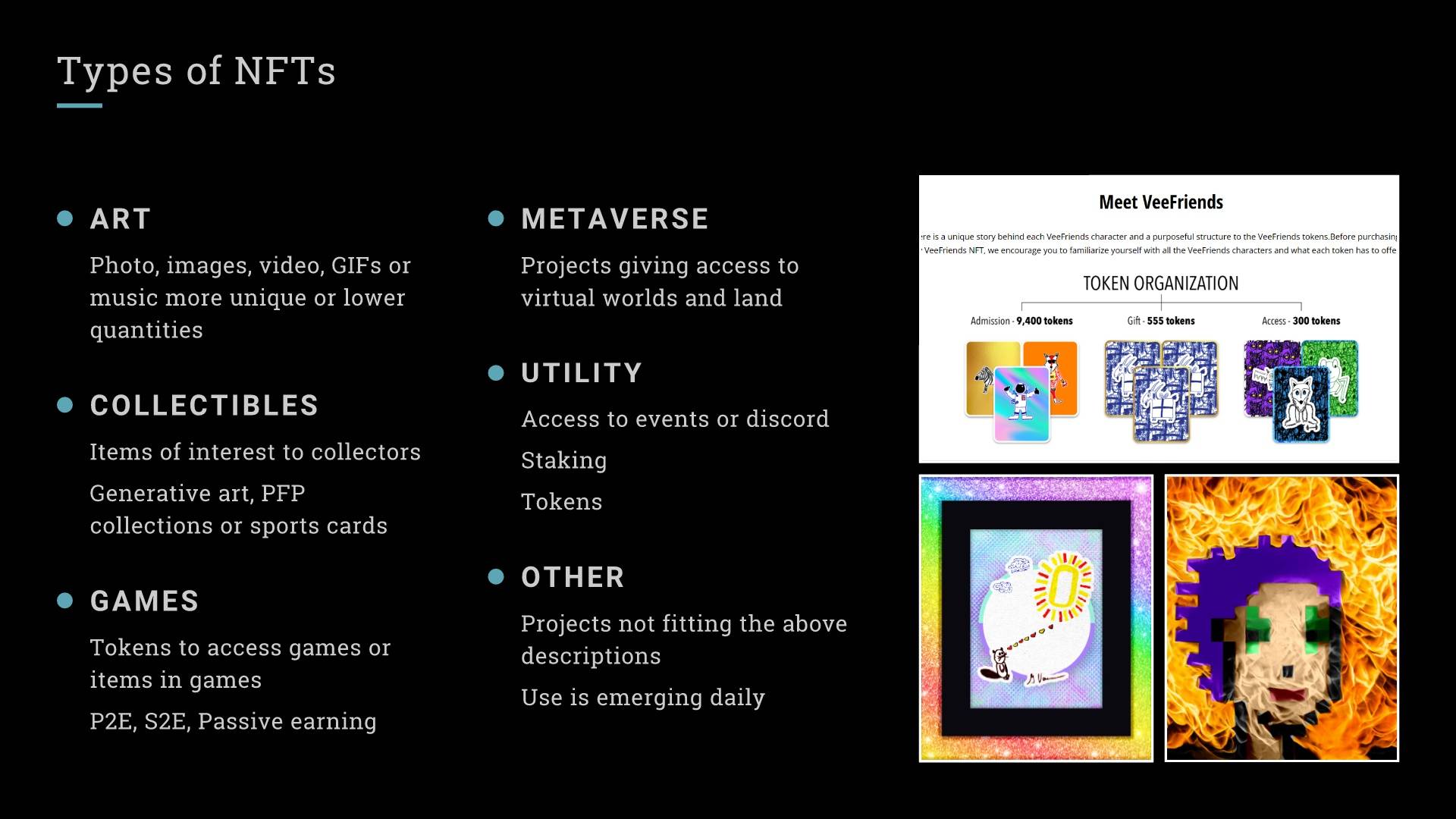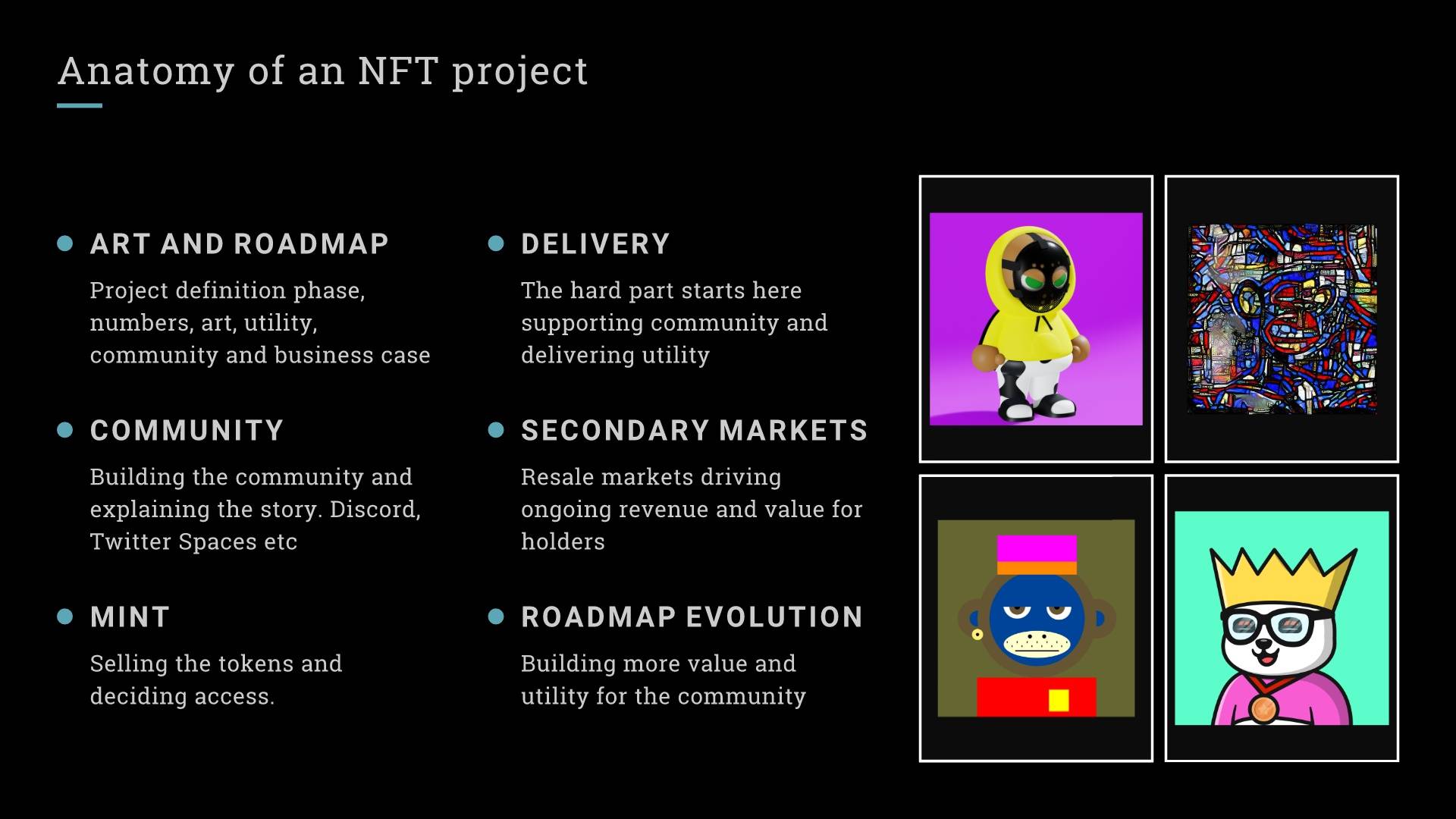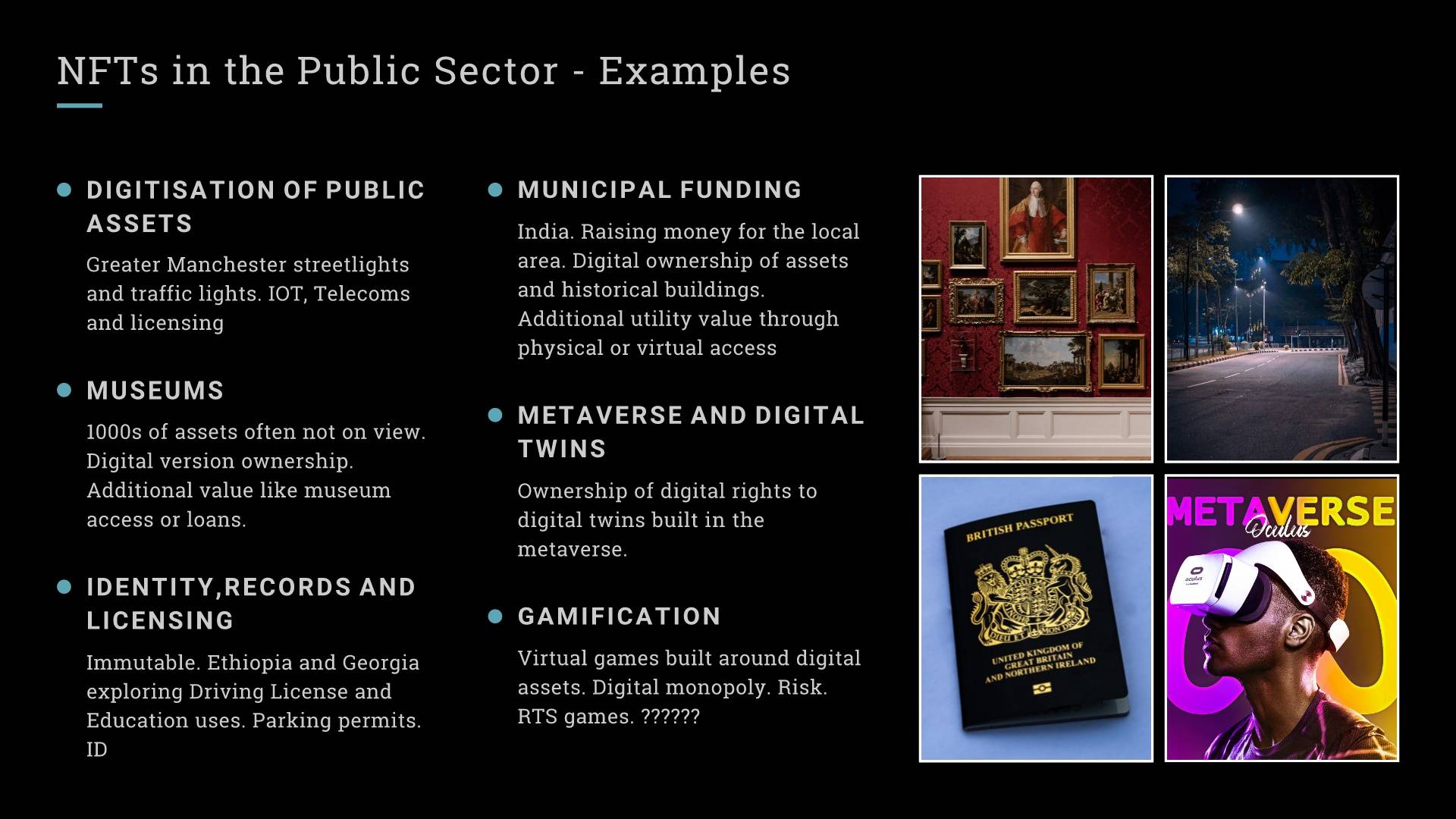NFTs in the Public Sector
We delivered this session on NFTs for you and me at the recent UKGovCamp 2022 virtual event. We talk about NFTs and some current and potential uses in and around the Public Sector. A number of people were unable to attend the actual session due to the huge numbers of quality sessions that are always on offer at this event. As a result, I agree to record the session so that people did not have to rely on notes. Please watch the video and we would love your feedback.
Given the events of last year, I feel it is necessary to make this clear for any ‘journalists’ reading this article or watching the video. This session was not run by Civil servants and was not a commercial session trying to generate projects and work. The aim of the session was to give an overview of NFTs and what they are and to discuss some use cases and ideas around how NFTs may add some value in the UK Public Sector and related services.
Workshop content – NFTs for you and me
As NFTs are an emerging technology and very early in their lifecycle we broke with UKGovCamp tradition and had a presentation prepared to share some background about the technology and its use as well as some examples to spark the discussion. The session is broken down into the following topics:
- What are NFTs?
- Types of NFTs
- Anatomy of an NFT project
- Examples of the use of NFTs in the Public Sector
Some of the examples were crowd sourced from twitter and the NFT community and we include the links in that section below.
What are NFT’s
In this part of the workshop we start by explaining what NFTs are and some of the key elements they depend on for their delivery. NFTs are Non-Fungible tokens. Non-Fungible tokens are one-of-a-kind items with unique metadata. These compare to fungible tokens where the are all identical and exchangeable easily for items of identical value. Examples of fungible tokens are things like money or crypto currency for example 1 Bitcoin = 1 Bitcoin. The easiest example of a NFT in real life is something like Pokemon cards. They are all different rarities, different series and age, and of different quality in terms of condition. If you want to sell a card there is no straight exchange or value available to you to conduct that transaction.
NFTs tend to be made up of images, photos, videos and generally are digital files although physical pieces can be attached as part of the smart contract. There can be many other rights allocated to NFTs through the contract and typically they come with some form of IP rights allowing you to use the NFT in certain circumstances.
NFTs are created(minted) and traded through the blockchain and writing records of ownership onto the chain. They are accessed and traded using a digital wallet like Metamask or Phantom depending on what chain the NFTs are created on (there are many wallets and blockchains these are just 2 common examples for the Ethereum and Solana chains). The majority of NFTs are created on the Ethereum blockchain currently however other examples of popular chains are Solana and Immutable X.

Smart contracts underpin and NFT and details the history, metadata and rights you are entitled to as a holder of a specific NFT.
After the initial minting of an NFT they are traded on the secondary market through various NFT marketplaces the largest of which currently is called Opensea, but other examples are Magic Eden, Token Trove and one of the largest cryptocurrency exchanges Coinbase is currently building up to release a market to rival Opensea.
NFT projects or creators make money through the initial mint cost but also a percentage royalty charged on all secondary sales of those NFTs. This is a critical difference where artists and projects do not just benefit from the initial sale but also through the ongoing trading of their art/products. This is very different to real life transactions.
You cannot discuss NFTs without mentioning gas. This again is very different to an in real life transaction to buy art or music. Gas is the cost of the transaction itself and writing the record to the blockchain. Gas costs vary from chain to chain but in terms of the largest NFT chain (Ethereum) gas is a significant cost and can fluctuate wildly during the day. Gas is effectively the cost of all of the miners (computers) creating the immutable record of the transaction on the blockchain.
Gas is effectively the major environmental impact of NFTs. It is the cost of the computing power to write contracts to the blockchain. Gas can fluctuate massively and when big projects are launching it can be extremely expensive. The other important factor here is that transactions can fail when buying NFTs if other people are faster than you to commit or use higher gas settings. Importantly though if the transaction fails you will still be liable for the gas but will not have the NFT. These costs can be significant.
Some famous examples of NFT sales are the $69 million sale by Beeple, the $2.9 million sale of Jack Dorsey’s first ever tweet and Veefriends project by Gary Vaynerchuk as well as his recent book games NFT project.
Types of NFTs
There are various different examples of NFT projects that can be broken down into the following types and also combinations of these types.
- Art
Photo, images, video, GIFs or music more unique or lower quantities
- Collectibles
Items of interest to collectors
Generative art, PFP collections or sports cards
- Games
Tokens to access games or items in games
P2E (play to earn), S2E (stake to earn), Passive earning
- Metaverse
Projects giving access to virtual worlds and land
- Utility
Access to events or discord
Staking
Tokens
- Other
Projects not fitting the above descriptions
Use is emerging daily

Anatomy of an NFT project
An average NFT project is not dissimilar to any project. There are various stages to a project and they broadly follow a similar pattern detailed below.
- Art and roadmap
Project definition phase, numbers, art, utility, community and business case
- Community building (marketing)
Building the community and explaining the story. Discord, Twitter Spaces etc
- Mint
Selling the tokens and deciding access.
- Delivery
The hard part starts here supporting community and delivering utility
- Secondary markets
Resale markets driving ongoing revenue and value for holders
- Roadmap evolution
Building more value and utility for the community

Examples of NFTs in the Public Sector
Some examples of NFT uses both now and potential future uses are as follows:
- Digitisation of Public Assets
Greater Manchester streetlights and traffic lights. IOT, Telecoms and licensing
- Museums
- Identity, Records and Licensing
- Municipal Funding
India. Raising money for the local area. Digital ownership of assets and historical buildings. Additional utility value through physical or virtual access. They have created a draft National strategy.
- Metaverse and Digital Twins
Ownership of digital rights to digital twins built in the metaverse.
- Gamification
Virtual games built around digital assets. Digital monopoly. Risk. RTS games.

What’s Next?
There were some very interesting discussions and some people interested in developing some early conversations to extend the discussion. Please get in touch with [email protected] if you are interested in an NFT meet up and workshop.
If you are interested in changing and improving your processes please have a look at our article comparing Visio functionality with the functionality of Engage Process and what additional benefits we can help you achieve.
